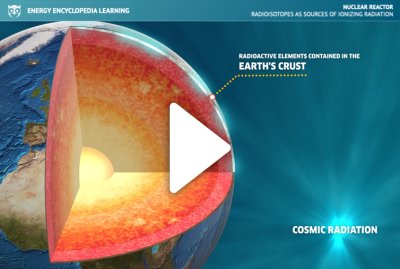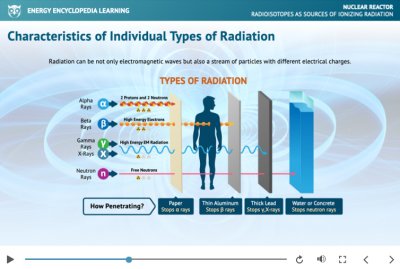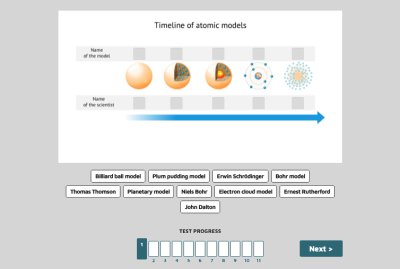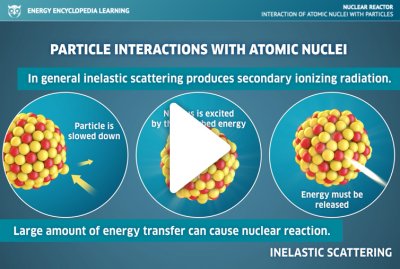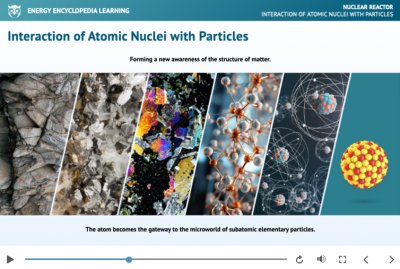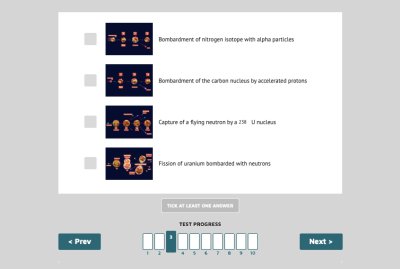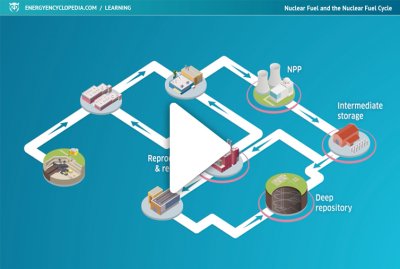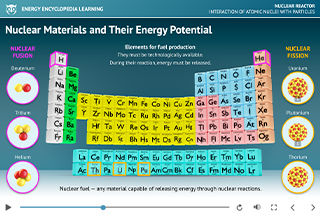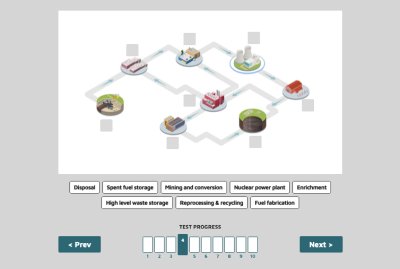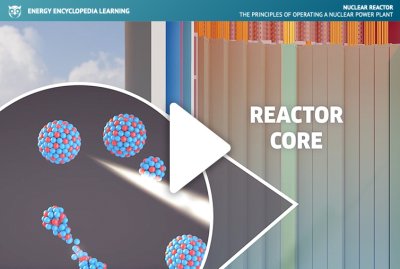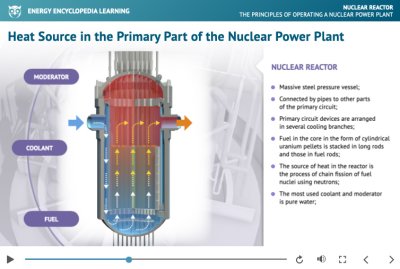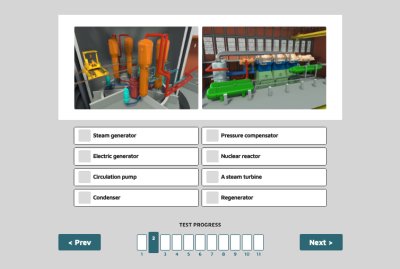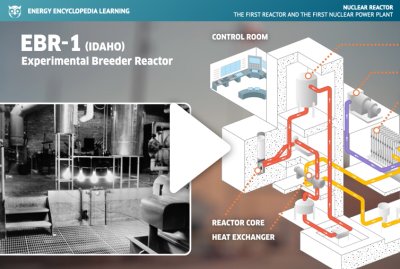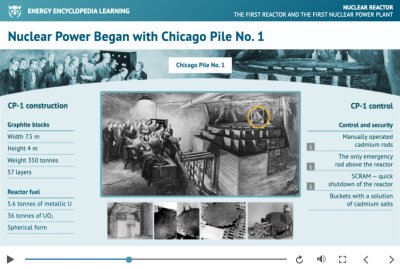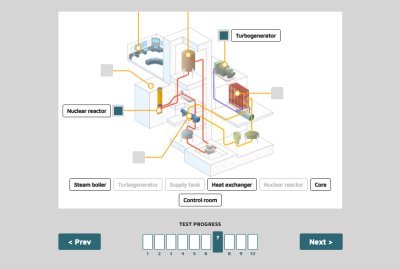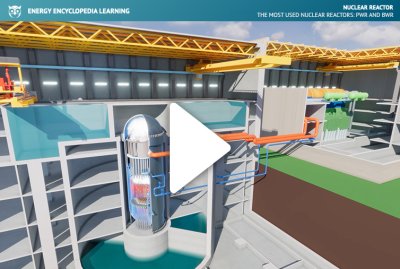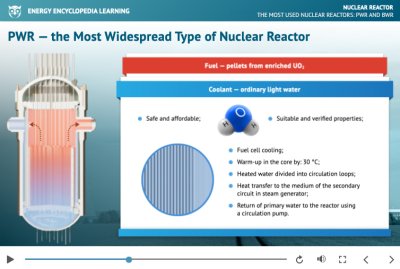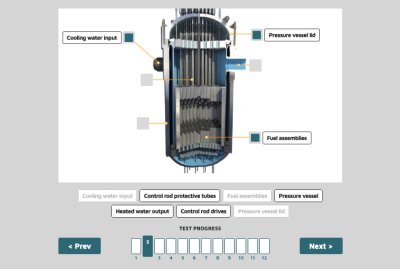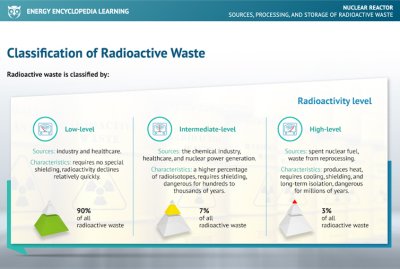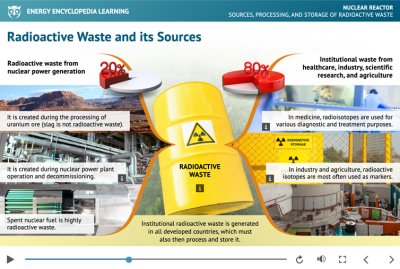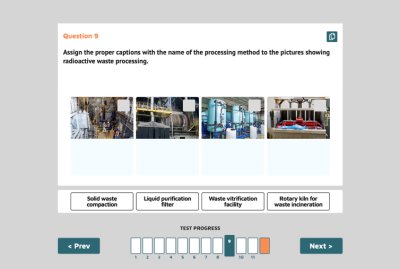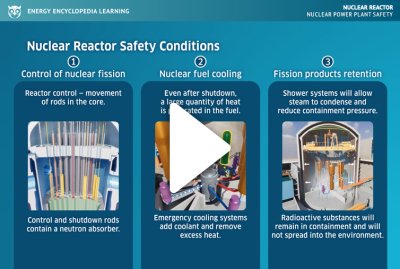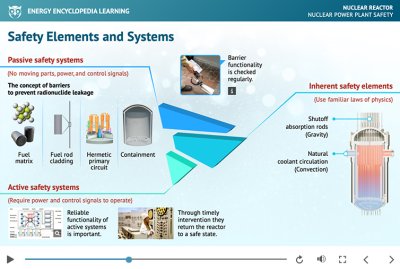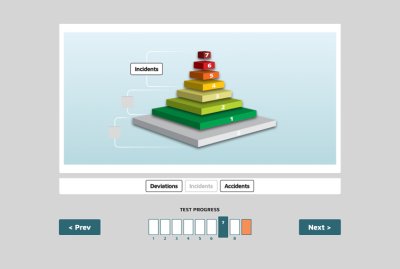
Nuclear Energy Courses
Nuclear Energy Courses
Radioisotopes as Sources of Ionizing Radiation
Ionising radiation is produced by the radioactive decay of unstable atomic nuclei called radioisotopes. It is everywhere around us, has different abilities to penetrate matter and various properties that we can exploit.
Interaction of Atomic Nuclei with Particles
Subatomic particles can interact with atomic nuclei when they come within range of strong nuclear forces. Neutrons, protons or other particles can bounce off, excite the atomic nucleus, enter the nucleus or cause fission.
Nuclear Fuel and the Nuclear Fuel Cycle
The nuclear fuel cycle begins with mining and processing the ore, enriching to the required concentration of fissile isotopes and producing fuel assemblies. Spent fuel is temporarily or permanently stored or reprocessed.
The Principles of Operating a Nuclear Power Plant
Nuclear power plant generates energy by fission of atomic nuclei in the reactor core. The reaction is controlled by a moderator and absorber. The heat is transferred to a steam turbine which converts it into electricity.
The First Reactor and the First Nuclear Power Plant
The first nuclear reactor was built by Enrico Fermi from graphite and uranium, and in 1942, he started the first controlled fission reaction. In 1951, the electricity from the first nuclear power plant lit four light bulbs.
The Most Used Nuclear Reactors: PWR and BWR
Most common types of nuclear reactors use ordinary water as a moderator and coolant. These are Pressurized Water Reactor that uses water under high pressure and Boiling Water Reactor in which water boils in the reactor vessel.
Sources, Processing, and Storage of Radioactive Waste
Radioactive waste is dangerous due to its negative effects on the biosphere and attention must be paid to the handling of it. Each type of radioactive waste requires a different system of storage and processing, as well as a different final storage in repositories.



